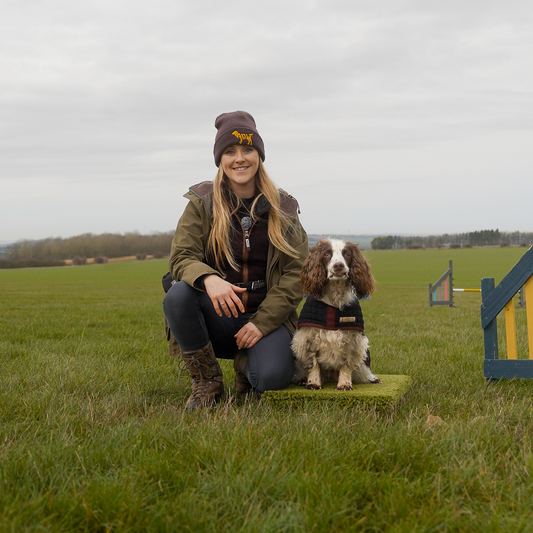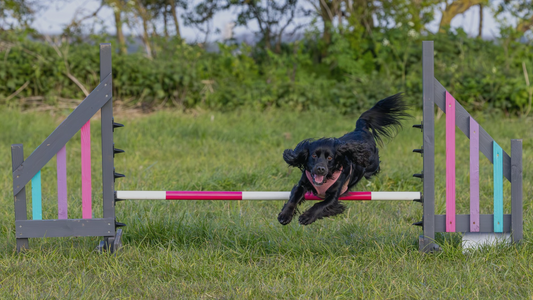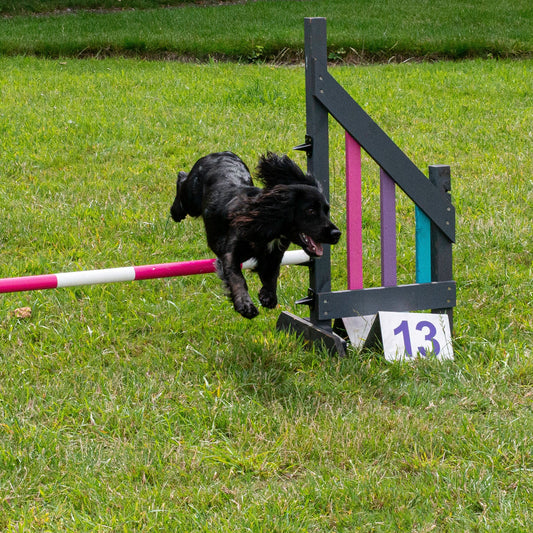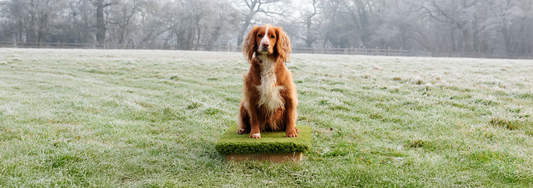In obedience training, the heel position refers to a specific position where the dog walks next to the handler on the left-hand side, with their head and shoulder aligned with the handler's left leg. The dog's nose should be in line with the handler's left thigh or knee, and their eyes should be focused on the handler's face. The dog should maintain this position whether the handler is walking, running, or stopping.
Dog position boxes (also referred to as dog training boxes, shaping boxes or obedience boxes) are a useful tool for training a dog to maintain a specific position, such as the heel position.
How a position box can benefit your score
-
When introducing the box to your dog you guide them in, they feel the front lip and that’s where you stop and reward.
-
Having the lip at the front conditions your dog to change position but not take a step back or forward.
-
The box is designed with narrow sides, which prevent your dog from resting on their hip
-
Approaching from all angles you can teach your dog to get into position: heel, finish, front sit
Here are the steps you can follow to use dog position boxes to train heel position:
-
First, introduce your dog to the dog position box. Place the box on the ground and encourage your dog to explore it. You can use treats to lure your dog onto the box and praise them for standing on it.
-
Once your dog is comfortable standing on the box, use a verbal command such as "heel" to signal that you want your dog to move into the heel position.
-
Start by standing with your dog at the side of the box and give the "heel" command. As your dog moves into the correct position, praise them and reward them with a treat.
-
If your dog moves out of the correct position, gently guide them back into position with a leash or your hand. Be patient and consistent, and reward your dog for staying in the correct position.
-
Gradually increase the amount of time your dog spends in the heel position on the box. You can also increase the difficulty by adding distractions, such as other people or dogs, or by walking in different directions.
-
Continue to practice the heel position on the box until your dog can maintain the position reliably without the box. Then, you can start practicing the heel position in different locations and situations.
Remember to keep training sessions short and fun, and always reward your dog for their efforts. With patience and consistency, your dog will learn to maintain the heel position both on and off the dog position box.
Like the content we put out and want to stay updated and in the know?

Join our subscribers to gain short weekly emails (under 1-minute reads) plus the opportunity to reach out & get professional advice on your own training challenges. Read answers to members' FAQs, receive training & equipment news offers and tips directly to your inbox.
Click here to join our subscribers
About the author: Hi 👋 I’m Emma, accredited as a professional dog trainer by the Institute of Modern Dog Trainers (IMDT). I help owners of energetic dogs achieve the dog-owning life they envisioned by providing robust obedience & agility training for dogs across my two venues in Balsham and Barton, near Cambridge.
Disclaimer: The content of this article does not include personalised advice and is for information purposes only. If you need individual advice or other enquiries please click here to get in contact or if you're not local to Anglian Dog Works, you can find a trainer in your area by going to the IMDT website: https://www.imdt.uk.com/find-a-qualified-imdt-trainer









